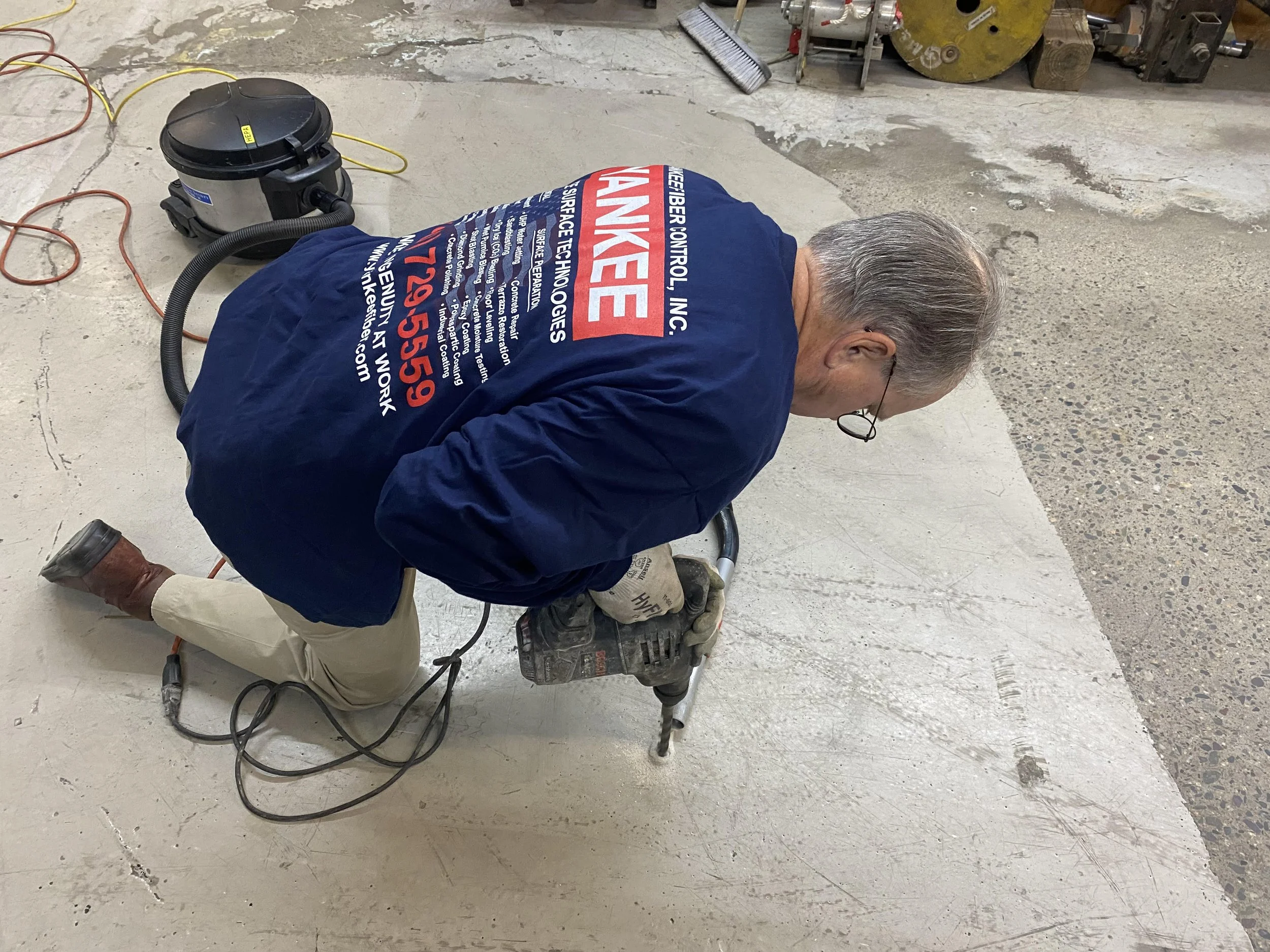Concrete Testing (RH)
Drilling a hole in a concrete slab to accomodate a RH probe
Installing a moisture reader
Installing a moisture sensor in the concrete
Reading temperature and moisture results. Concrete should generally have a moisture content of below 75% for optimal adhesion of epoxy flooring systems.
Flooring failures are among the largest category of construction claims. For example, epoxy floors, carpet, and VCT often fail through having high moisture in the underlying concrete. RH concrete testing, also known as Relative Humidity concrete testing, is a method used to measure the moisture content in concrete slabs. This testing is important because excess moisture can negatively affect the long-term performance and durability of flooring installed on concrete.
RH concrete testing involves placing specialized sensors called relative humidity probes, or probes with a built-in hygrometer, at a specified depth within the concrete slab. These probes measure the relative humidity within the concrete over time. By monitoring the relative humidity, it is possible to assess the moisture conditions within the slab and make informed decisions regarding flooring installations.
Yankee is ICRI (International Concrete Repair Institute) certified and can produce benefits including:
Improved flooring performance: RH testing can ensure that the proper resinous floor is installed which can prevent flooring failures such as delamination, buckling, and adhesive failures.
Cost-effective: RH testing is a cost-effective way to prevent flooring failures by identifying and addressing potential moisture-related issues before they become a problem. This can save time and money on repairs and replacements.
Compliance with coating manufacturers’ specifications: Many industry standards, such as ASTM F2170, require RH testing to ensure the coating is compatible with the moisture in concrete slabs. RH testing can help ensure compliance with these standards.
Accurate and reliable results: RH testing provides accurate and reliable results by measuring the moisture levels deep within the concrete slab. This allows for more accurate assessments of the moisture conditions in the slab and helps prevent moisture-related issues.




